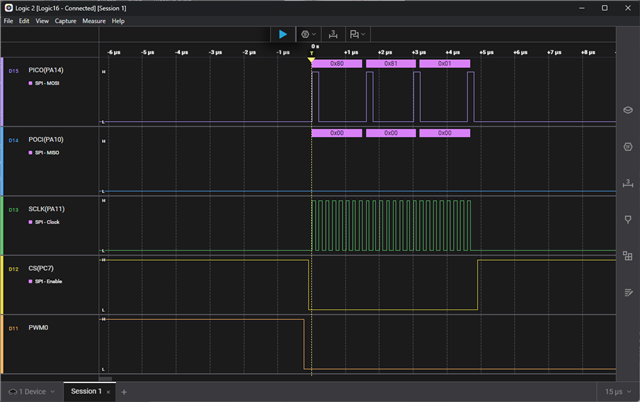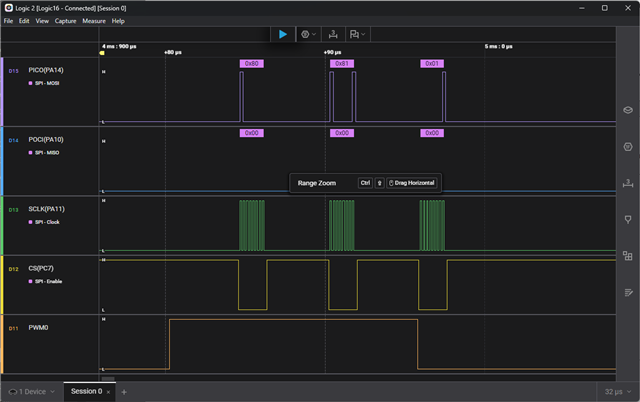Other Parts Discussed in Thread: DRV3901-Q1,
Tool/software:
Hello,
I need to communicate to DRV3901-Q1 devices which require 24 bit frames. What would be the approaches to implement this?
- Manual CS control
- or using PACKEN is possible
I would line to use DMA and not sure if manual CS is possible with DMA.
Any suggestion/advice would be helpful.
Regards,
Eugene



